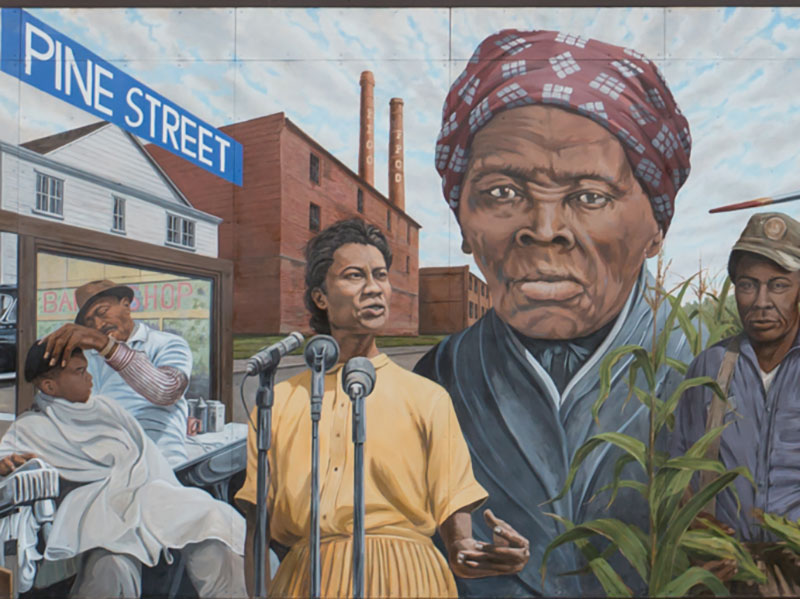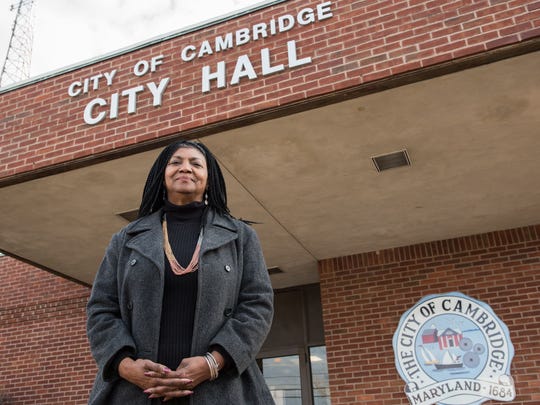
Mural of Richardson and other black leaders, Dorchester County, n.d.

Mural of Richardson and other black leaders, Dorchester County, n.d.
Following the 1967 uprising, public spaces in Cambridge like movie theaters and restaurants began to be desegregated at a faster rate. Throughout the 70s and 80s, unemployment was high for white and black people. However, Cambridge was slowly and equitably shaped into a modern economy. As that shift happened, more black people were elected to local government.
"What happened [in 1967] happened for good reason, and if people still remember that, it's fine, but the people I know here, black and white, are passionate about building a nice town and living in a nice place."
-Dion Banks, Eastern Shore Network for Change, 2017
In 2008, Victoria Jackson-Stanley became the first black mayor of Cambridge. She works to continue Richardson’s legacy by revisiting the issues of economic oppression that Richardson first brought up in the 1960s. Communication about race issues between black and white citizens has been made possible by many programs that are attempting to form bridges and prompt healing. Although some economic disparities like unemployment rates and wealth still exist between black and white citizens, progress is being made.
“We look better, and we're moving in a positive direction. There is a lot more history here, especially history that reflects black women.” -Victoria Jackson Stanley, Baltimore Magazine, n.d.

Victoria Jackson-Stanley, Ralph Musthaler, 2017
Richardson’s impact in Cambridge was felt across the country. Her radical ideas on economic justice pushed the rest of the civil rights movement to adopt them as well. The progress she made in Cambridge was unique because it was outside of the deep south and it spread regionally, through the eastern US. Economic disparities like unemployment rates and wealth still exist between black and white citizens, but the progress that Richardson’s movement sparked is still being made.
"The lady general of civil rights."
-Ebony Magazine